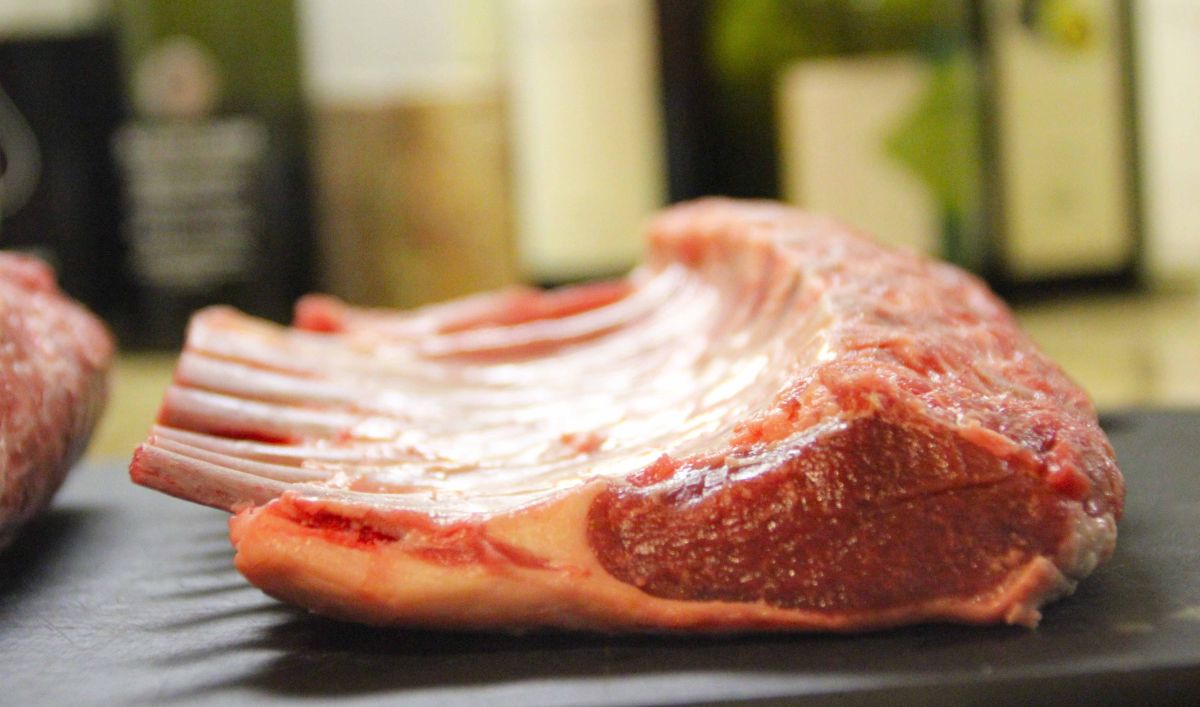
Exports of British lamb appear to be booming, according to the most recent figures released by the Government.
But with the majority of those exports heading to the European Union, there is growing concern about the impact of Brexit.
Data released by Her Majesty's Revenue and Customs (HMRC) shows that exports of fresh and frozen sheep meat were up 17 per cent in January this year compared with the same month in 2016.
For the first time in five years sheep meat enjoyed a positive balance of trade in the first month of the year.
Phil Stocker, chief executive of the National Sheep Association, welcomed the figures, although he expressed concern about what would happen when the United Kingdom left the European Union.
Exports to Germany in January were up by nearly 60 per cent. At the same time, domestic consumption of lamb in the UK is falling.
Phil Stocker said that the improvement in exports was largely down to falls in the value of the Pound. Sterling has dropped significantly against other currencies since the United Kingdom voted to withdraw from the European Union in a referendum on June 23, 2016. The declining value of Sterling has made British lamb cheaper in export markets.
"Overall it is a situation driven by currency," said Phil Stocker. "Our declining currency has led to more favourable export conditions. So we are exporting a lot at the moment, although we do see a threat going forward. Most of our exports go to the European Union.
"We are going to be very much dependent on the United Kingdom negotiating a successful trade deal once we leave the European Union," he said.
"What the figures show is that there is a demand for UK lamb in the EU. And we think there is the opportunity to see that grow if the trade deal we get with the EU is favourable."
Sterling value
According to Rebecca Oborne, red meat analyst at AHDB, exports increased in January by 1,000 tones - 17 per cent - to 7,200 tonnes.
But she said in her reading of the figures: "Most UK exports of sheep meat are shipped into the rest of the EU, and therefore the majority of the increase also went into the EU.
"Looking at individual countries, exports to Germany recorded the largest increase to 1,500 tonnes - a 59 per cent (550 tonnes) year-on-year increase. Shipments to France remained steady year-on-year, at 3,100 tonnes," she said.
Phil Stocker said that, as well as helping to boost exports, the fall in the value of Sterling had also helped at home by making imported meat more expensive.
"The currency conditions have also been favourable in that product coming into the UK from places like New Zealand has become more expensive," he said.
NZ decline
Rebecca Oborne said the HMRC figures showed that the UK imported a total of 6,600 tonnes of fresh and frozen sheep meat during January - an increase of five per cent, or 300 tonnes - compared with the same time last year.
Imports from the European Union increased by 49 per cent - some 400 tonnes - year-on-the-year to 1,300 tonnes.
But imports from New Zealand and Australia both declined year-on-year, by one per cent (20 tonnes) and 24 per cent (300 tonnes) respectively.
"As reported recently, it was expected that the UK would receive less sheep meat from New Zealand and Australia," Ms Oborne said.
"New Zealand production was very strong during the final quarter of 2017, which means there are now fewer lambs there left to come forwards," she said in her analysis of the market.
"The UK’s net trade position (reported exports minus imports) for sheep meat remained positive for the eighth consecutive month during January, which means that for the first time since 2013 the month of January recorded a positive position," she said.
Lower consumption
Despite the positive news on the export market and on the balance of trade, Phil Stocker expressed concern about the domestic market for lamb.
"One thing we are seeing is that lower consumption is limiting our UK market," Mr Stocker said.
He said: "The domestic market accounts for 65 per cent of our production and, unfortunately, domestic consumption is going down. Lamb is seen by consumers as a premium, expensive meat compared particularly with chicken and pork.
"And there is still an image that it is fatty, which is not the case these days. Fat levels in lamb have really reduced, partly through genetic change and partly as a result of selecting when leaner," said Mr Stocker.
He said that a lot of lamb was still sold in traditional roasting cuts. The modern day consumer had, to a great extent, moved away from these traditional cuts, moving towards products that could be cooked much more quickly.
Halal
One section of the community that was helping the domestic market for lamb was the Asian community, he said.
Consumers with origins in the Indian sub-continent, in particular, ate lots of lamb.
"The halal market is very important to us in the domestic market. It is probably the one area of the domestic market that is showing growth," said Mr Stocker.
And he said that much of the lamb eaten by non-Asian consumers in the UK was probably consumed in Asian cookery - whether in restaurants and take-aways or in curries and tagines made at home.
He said the HMRC figures showed that the export opportunities were there for the UK sheep industry.
But he expected volatile times ahead with the United Kingdom leaving the EU and possible delays in opening up new markets like the United States and China.
Such volatility was likely to make the domestic market increasingly important. That was where the industry needed to invest more effort.
